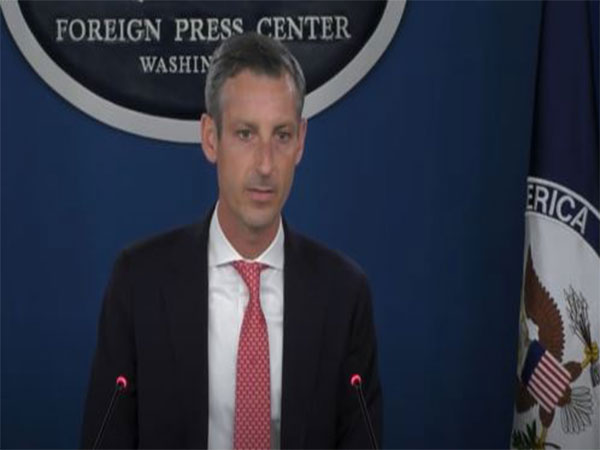US reaches out to friends and allies to expose Chinese surveillance balloon programme
The US has intensified its diplomatic efforts with its friends and allies in particular its Quad partners Australia, India and Japan - to expose Chinas surveillance programme through high altitude floating balloons, days after a huge Chinese spy craft was shot down by an American fighter jet.

- Country:
- United States
The US has intensified its diplomatic efforts with its friends and allies in particular its Quad partners – Australia, India and Japan - to expose China's surveillance programme through high altitude floating balloons, days after a huge Chinese spy craft was shot down by an American fighter jet. Senior Biden administration officials on Thursday said that as many as 40 countries have been impacted by the balloon surveillance programme of China. This includes the United States. Officials, however, refused to name the countries where Chinese surveillance balloons have been spotted so far.
China has denied the existence of such a programme. However, the White House and the State Department said that it is working on taking action, including imposing sanctions on organisations and companies who have facilitated such a programme in China.
“We were able to minimise the intelligence collection value of this particular system because we identified it early on and we took prudent steps, including steps on the ground, that would minimise its ability to provide valuable intelligence back to the PRC (People's Republic of China). Not every country is going to be in a position to do that,” State Department Spokesperson Ned Price told reporters at a news conference.
“So, we want to provide countries with information that they may need to help defend themselves against this type of programme, similar types of programs going forward,” he said. This is a programme that has spanned five continents, 40 countries, and this is a programme that has deployed these types of assets around the globe in that regard,'' he added.
The huge balloon was shot down by a US fighter jet on Saturday off the coast of South Carolina in the Atlantic Ocean. It had hovered over sensitive installations in continental America for several days after entering the US airspace on January 30 in Montana.
The US has shared the information with Quad partners – Australia, India and Japan along with its NATO allies on the issue. China, Price said, has a lot of explaining to do.
“They have a lot of questions from countries around the world. It's not surprising to hear them issue these types of denials. They're in a very difficult spot, but they're in a difficult spot because they placed themselves there. They decided to take this action against the United States,” Price said.
“They've decided to leverage this programme against dozens of countries around the world. I wouldn't say that we are seeking to organise a formal coalition of countries that have been subjected to this specific programme. What I would say is we have, as part of our diplomatic blocking and tackling since day one of this administration, sought to have a convergence of views regarding the challenges presented by the PRC. There are a number of countries with whom we consult very closely about these challenges,” he said.
“We work very closely, and coordinate our approach so that it's most effective. We do that with Europe. We do that with countries in the Indo-Pacific. We do that with countries in the Western Hemisphere, and we do that with countries in Africa, among other places,” Price said. White House Press Secretary Karine Jean-Pierre told reporters that the United States sent a clear message to China that a violation of sovereignty was unacceptable by shooting down the balloon.
“Protecting our own sensitive intelligence and maximising our ability to track the balloon and recover the payload to get more information on the PRC's programme,” she said.
“The US will also explore taking action against PRC entities linked to the PLA that supported the balloon's incursion into US airspace. We will also look at broader efforts to expose and address the PRC's larger surveillance activities that pose a threat to our national security and to our allies and partners as well,” Jean-Pierre said.
“As we saw the second balloon over Central and South America that they just acknowledged, China has no explanation for why they violated the airspace of Central and South America countries. The PRC's programme will only continue to be exposed, making it harder for PRC to use this programme. And that's how we're going to move forward,” she said.
(This story has not been edited by Devdiscourse staff and is auto-generated from a syndicated feed.)
ALSO READ
Tragic Motorcycle Accident in Deoband: The Price of Helmet Neglect
Pacific Economic Update: Strategies for Sustainable Growth Amid Global Uncertainty
Dhanteras Gold Sales Face Slow Start Amid High Prices
Glittering Gains: Gem & Jewellery Sales Soar Amid Price Surge
Government Initiates Price Cut on Life-Saving Cancer Drugs










